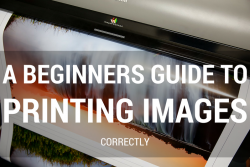Of the three components of the Exposure Triangle, getting your head around understanding Aperture will be the most difficult. As Aperture isn’t just a series of numbers that make no real logical sense like ISO or shutter Speed. The role of aperture is to control your depth of field (what’s in detail between you and your point of focus and what’s in detail past it) that is subject to change depending on your distance from your focus point.
Once you get your head around and master Aperture it will open up so many wonders and possibilities with your photographer, especially if your someone that likes doing all facets of photography from Landscape to Portraits, Weddings, Sports. The right Aperture choice will isolate a subject, add emotion and will tell a story. It’s worth learning and learning well.
BREAKING APERTURE DOWN
Ok let’s break Aperture down to size in bite size points.
1. Aperture is also referred to as the “F-stop”.
2. With Aperture the small the aperture number (like f2.8) the wider the opening. The wider the opening the more light is let in which will give you a faster shutter speed but also a shallower depth of field and Vice Versa.
3. For landscape photographers we shoot around F11 and higher to F22 so we have maximum depth of field in our shots from the foreground to the background. For portrait photographers, it is common to have a sharp subject and soft backgrounds. This won’t be achieved at F11 so they will be shooting more around the f2.8 – f5.6 range.
4. Just like ISO and Shutter speed. If your photo is not correctly exposed you can just change the aperture to correct just like you can with ISO or Shutter speed but the trade off is changing your depth of field.
5. Your chosen aperture and your distance from your point of focus will affect each other.

APERTURE FIELD TEST
With Aperture seeing is believing so here is a simple test so you can see for yourself how it works.
Set your camera up on a tripod that is near an object that is relatively close. Kind of like a can on a kitchen bench.with your camera in AV (Aperture priority mode)
Now focus on this item and open your aperture up (the lowest number it will go to) this is also written on your camera. This test is best done with your camera in Aperture priority so you choose the aperture and the camera will change the shutter speed accordingly, this is so your shots will have the same exposure.
Now with your camera all set up take your first shot. Now click your aperture wheel three clicks (this will be a full stop if your camera is set up according to our other article). Then take another shot and repeat this until you hit your aperture minimum (closed down). Like F22 – F32. (Subject to lens).
Now with these images view them in your chosen image software and with each image changing a stop you will a change in the depth of field each shot, especially in the distance.
WRAPPING IT UP
Ok this was a small bite and look at Aperture. From this article, you should now know the following done.
- Know that with Aperture the small the number the greater the DOF (Depth of Field).
- For your Aperture test, you can see the difference from a wide aperture to a small aperture.
- When you changed your Aperture in AV mode you would have seen that with every change in Aperture it had an effect on your shutter speed.












